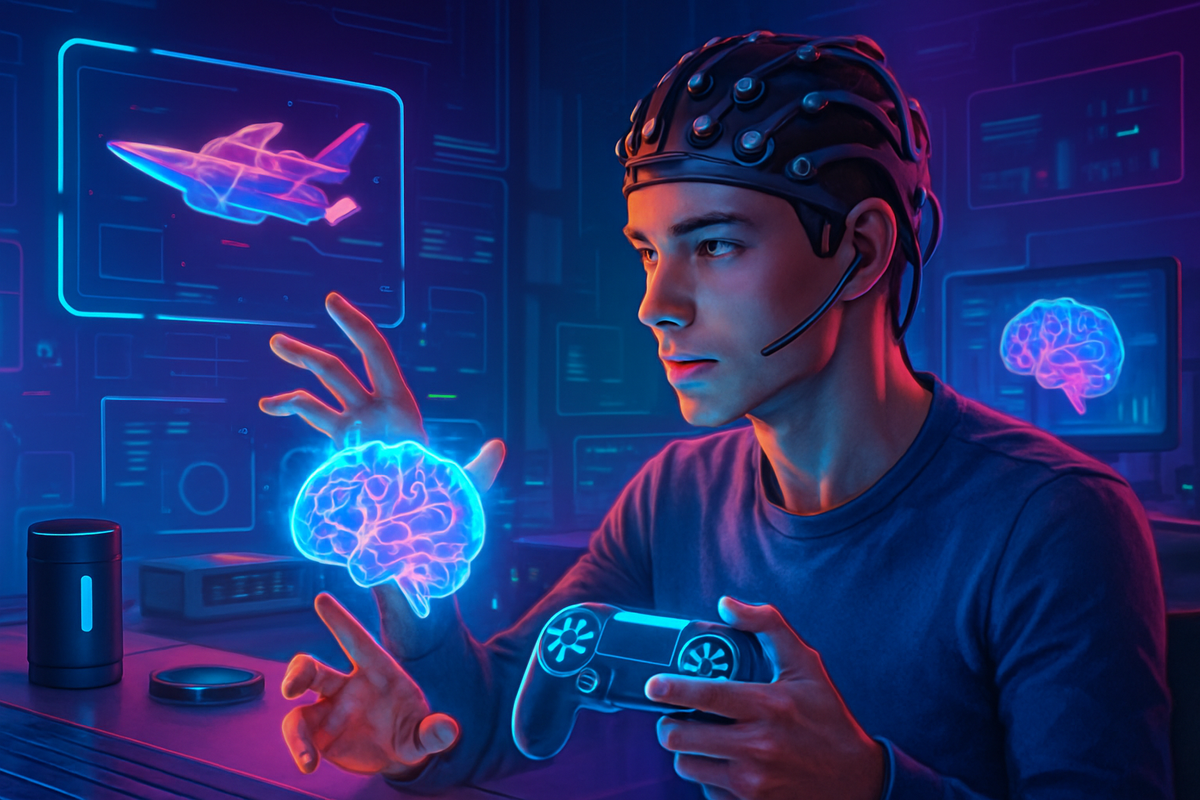The Brain-Computer Interface Revolution: How Mind Control Tech Will Transform Work, Wellness, and Everyday Life by 2030
By 2030, BCIs will empower your mind to control devices and enhance productivity. Imagine mind-controlled gaming, hands-free texting, and neurofeedback wellness. Ready to harness your brain's potential? Step into the future of thought-based technology.

Welcome to the Age of Mind Control (No, Not That Kind!)
Forget sci-fi villains and silver-helmeted telepaths—the real brain-computer interface (BCI) revolution is here, and it’s about empowerment, not enslavement. By 2030, your mind could be your most powerful controller, wellness coach, and productivity hack. From Neuralink’s brainy breakthroughs to Apple’s iPhone you can think into action, the next five years promise to turn your neurons into the ultimate user interface. Ready to peek inside the future?
BCI 101: What’s a Brain-Computer Interface (and Why Should You Care)?
A brain-computer interface (BCI) is a system that translates brain activity into commands for computers, robots, or digital devices—no hands required. Think of it as a mental remote control, a neural keyboard, or a bridge between thought and technology. BCIs can be invasive (implanted in the brain, like Neuralink’s Telepathy chip), minimally invasive (threaded via blood vessels, like Synchron’s Stentrode), or non-invasive (wearable EEG headbands and sensors).
- Medical Marvels: Helping paralyzed patients move, communicate, and even play Mario Kart—using only their thoughts.
- Consumer Tech: Mind-controlled gaming, hands-free texting, and wellness apps that read your mental state.
- Productivity & Wellness: From mental fatigue monitoring to stress-busting neurofeedback, BCIs are poised to reshape how we work and care for our minds.
“The next big thing isn’t a new gadget you hold—it’s the ability to shape your digital world with pure thought.”
The State of the (Neuro)Art: Who’s Leading the BCI Charge?
Neuralink: Elon’s Mind-Meld Machine
Neuralink has stolen headlines with its Telepathy implant, already enabling patients with paralysis to play video games and control devices using only their brains. In 2025, seven participants demonstrated real-world feats: multiplayer Mario Kart, first-person shooters, robotic arm control, and even “mental texting.” The ambition? Restore movement, enable communication, and eventually allow people to control robotic limbs or even humanoid robots remotely. (Source: TS2 Tech)
Apple: The iPhone Gets Psychic
Not to be outdone, Apple has revealed brain-computer interface technology for iPhones, letting users control apps and features by thought alone. This leap puts Apple in direct competition with Neuralink and signals that mainstream BCIs are coming to your pocket sooner than you think. (Source: Big Tech Digest)
Synchron & Others: Less Invasive, More Inclusive
Synchron is pioneering a stent-like BCI that can be implanted via blood vessels—no open-brain surgery required. Its Stentrode device is already helping patients with severe paralysis communicate and interact with computers. Meanwhile, a wave of startups and research labs (think Emotiv, Muse, NextMind) are racing to make non-invasive, wearable BCIs as common as fitness trackers.
Mind Over Mouse: How BCIs Will Transform Everyday Life by 2030
1. Accessibility & Empowerment
Imagine unlocking your phone, typing, or even driving a car without moving a muscle. For people with paralysis, ALS, or limb loss, BCIs are already restoring independence, enabling communication, and offering new ways to work and play. By 2030, expect BCI-driven accessibility to go mainstream—think smart homes, vehicles, and workplaces designed for seamless thought-powered interaction.
2. Gaming & Immersive Entertainment
Why just play a game when you can be the controller? Multiplayer mind-controlled gaming is no longer a pipe dream. Neuralink’s test pilots have already raced Mario Karts with their minds; the next wave will bring full-body VR/AR, adaptive difficulty based on mental state, and even eSports leagues for BCI gamers.
3. Productivity & The “Neuro-Office”
Wave goodbye to carpal tunnel and hello to the mental keyboard. Brain-computer typing, hands-free navigation, and even “thought macros” (imagine thinking ‘send email’ and—zap!—it’s done) could become office staples. Early adopters are already experimenting with mind-controlled note-taking and workflow automation. The productivity hacks of tomorrow? All in your head.
4. Wellness & Mental Health
BCIs are poised to revolutionize mental health and wellness. Current devices can detect stress, fatigue, or distraction and trigger real-time interventions: meditation prompts, focus music, or calming lighting. By 2030, AI-powered BCIs may offer personalized neurofeedback, early detection of mood disorders, and even “digital therapists” that adapt to your brain’s needs.
Real Stories, Real Impact: Meet the BCI Pioneers
In 2025, a paralyzed Neuralink patient named Noland steered Mario Kart with his mind. Another, Alex, used a BCI to control a robotic arm and play rock-paper-scissors for the first time in years. ALS patient Brad described his implant as life-changing: “I go outside now. Going outside has been a huge blessing for me.” These are not science fiction stories—they’re today’s reality. Now imagine what millions of users could do by 2030.
The Big Questions: Ethics, Privacy, and the Mind’s Last Frontier
Of course, with great power comes great… existential dread? The ethics of BCIs are hotly debated:
- Privacy: Who owns your brain data? How do we prevent “neuro-hacking” or unwanted mind-reading?
- Security: As BCIs become networked, how do we safeguard against cyberattacks—especially when the stakes are literally your thoughts?
- Consent & Agency: What protections exist for vulnerable users? How do we avoid bias or discrimination based on neural data?
- Societal Impact: Will BCIs empower all—or create new digital divides between the “mind-connected” and everyone else?
“AI is going to be both extremely unpredictable and unimaginable.”
— Ilya Sutskever, Safe Superintelligence Inc.
As BCI adoption accelerates, expect a lively (sometimes heated) public debate—and smart regulations to keep mind control safe, ethical, and awesome.
Hands-On: How to Join the BCI Revolution (Today!)
- Try a Non-Invasive BCI: Wearables like Muse and Emotiv let you experience neurofeedback, meditation, and even basic mind-controlled apps—no surgery required.
- Beta-Test Mind-Controlled Tech: Watch for Apple’s upcoming BCI integrations, or sign up for clinical trial notifications from companies like Neuralink and Synchron if you qualify.
- Advocate for Accessibility: Support organizations bringing BCIs to those who need them most—patients, disabled users, and communities underserved by traditional tech.
- Stay Informed: Follow the latest neurotech news (and subscribe to our blog below for smart, jargon-free updates and perks).
Pro tip: The future belongs to the curious. Early adopters and advocates will help shape how BCIs are used, regulated, and celebrated. Don’t just watch from the sidelines—get involved!
2030 and Beyond: The Mind as the Ultimate Interface
By the end of this decade, controlling your world by thought won’t be a party trick—it’ll be a daily reality for millions. From work and wellness to play and connection, BCIs promise to make life more inclusive, efficient, and—dare we say—a little more magical. The only real question: How will you use your mind’s new superpowers?
Want to stay one thought ahead?
Subscribe for free to become a Funaix Insider! Get smart news, perks, and join the only BCI-ready community where subscribers can write and read blog comments. Don’t miss your shot—subscriptions are free (for now) and your brain will thank you!




